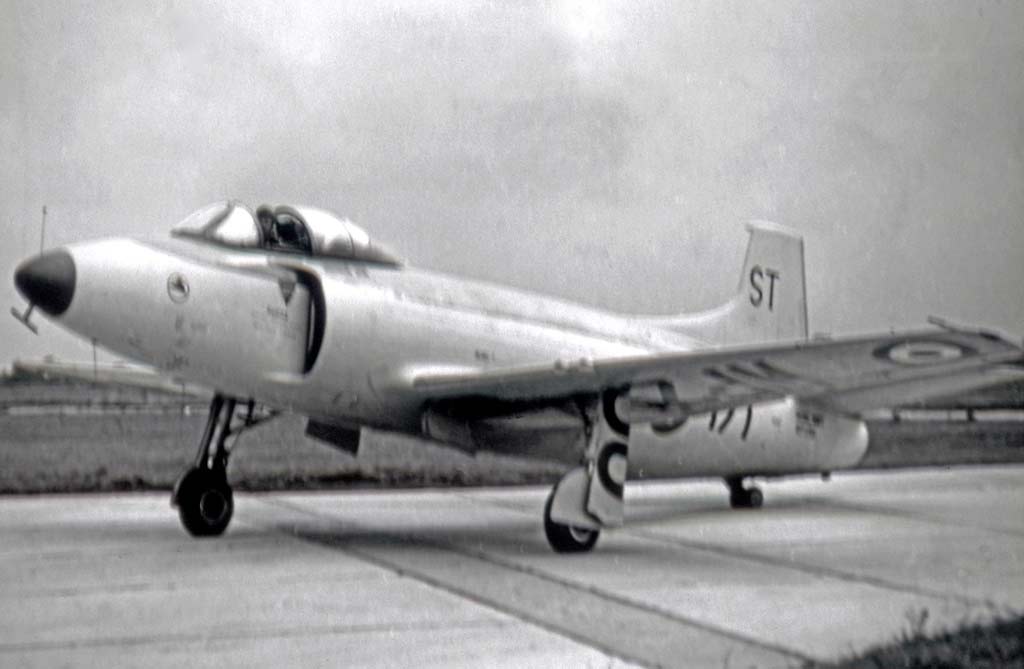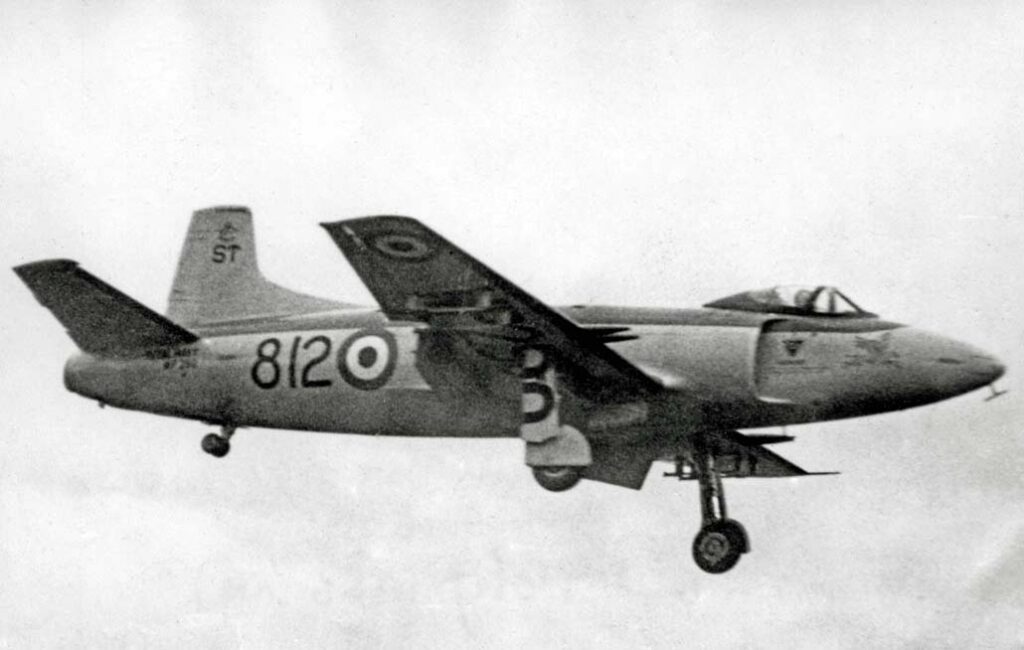The Supermarine Attacker was Britain’s first naval jet fighter with a distinctive tailwheel design and swept wings.
In brief
The Supermarine Attacker was a British naval jet fighter and the Royal Navy’s first operational jet. With its swept wings and tail-dragger undercarriage, it marked a transition from propeller-driven to jet-powered aircraft in carrier aviation. Developed in the late 1940s and entering service in the 1950s, it played a transitional role before more advanced designs took precedence. The Attacker served primarily with the Royal Navy’s Fleet Air Arm and saw no combat, being used for fleet air defense and training. It was known for its robust construction and served as a crucial stepping stone in the evolution of naval aviation technology.
The Supermarine Attacker stands as a significant aircraft in the history of naval aviation, representing the Royal Navy’s initial foray into the jet age and highlighting the technological and strategic shifts of the post-WWII era.

History of the Development of the Supermarine Attacker
The Supermarine Attacker was developed in the aftermath of World War II, as nations raced to incorporate jet technology into their military arsenals. The need for a jet-powered naval fighter became apparent as the performance advantages of jet aircraft over piston-engine fighters were undeniable. The Royal Navy sought to maintain a cutting-edge fleet air arm, leading to the development of the Attacker.
The program was initiated by Supermarine, a company already renowned for the legendary Spitfire. The Attacker utilized the swept-wing design based on the earlier Supermarine 392, reflecting the aerodynamic advancements of the era. The first flight occurred on 27 July 1946, heralding a new age of British naval aviation.
The aircraft was developed to provide the Royal Navy with an effective air defense capability aboard carriers, ensuring the fleet’s protection and maintaining air superiority at sea. While the Attacker was an interim solution pending more advanced designs, it played a crucial role in transitioning naval aviation from propeller-driven to jet-powered aircraft.
Design of the Supermarine Attacker
The design of the Supermarine Attacker was notable for its combination of new and traditional elements. It featured swept wings, an innovation derived from German research during WWII, which improved performance at high speeds. However, it retained a tailwheel undercarriage, a holdover from earlier propeller aircraft designs, making it the last British fighter to have such a feature.
The Attacker was powered by a single Rolls-Royce Nene turbojet engine, providing significant thrust and speed improvement over piston engines. The aircraft had a length of around 37 ft and a wingspan of 36 ft, typical of early jet fighters. It was armed with four 20 mm Hispano cannons, providing formidable firepower.
While the swept wings and jet propulsion were advanced features, the retention of the tail-dragger undercarriage was seen as a drawback, complicating carrier landings and limiting the aircraft’s overall performance and appeal. Nevertheless, the robust design and construction of the Attacker made it a valuable asset during its service life.
Performance of the Supermarine Attacker
The Supermarine Attacker’s performance represented a significant improvement over preceding propeller-driven naval fighters. It could reach speeds up to 590 mph and had a service ceiling of around 44,000 ft. The range was approximately 500 miles, suitable for its intended role in fleet air defense and interception missions.
While the Attacker’s performance was competitive at the time of its introduction, it was quickly surpassed by newer jet designs with tricycle landing gear, more powerful engines, and refined aerodynamics. Aircraft such as the Hawker Sea Hawk and the de Havilland Sea Venom eventually outclassed the Attacker, leading to its relatively short service life.
Variants of the Supermarine Attacker
The Supermarine Attacker had several variants over its production life. The primary version was the Attacker F.1, which was the first to enter service with the Fleet Air Arm. This was followed by the improved Attacker F.2 and the final production variant, the Attacker FB.2, which had enhanced armament and equipment. Each variant aimed to improve upon the performance and capabilities of the aircraft, although the fundamental design remained largely the same.

Military use and combat of the Supermarine Attacker
The Supermarine Attacker served primarily with the Royal Navy’s Fleet Air Arm in the 1950s. Its roles included air defense, pilot training, and various fleet support duties. The Attacker did not see combat as its service period was relatively peaceful. However, it played a vital role in defending Britain’s naval assets and training a new generation of pilots in jet aircraft operations. The aircraft was eventually phased out in favor of more advanced designs, ending its service in the late 1950s.
The Supermarine Attacker, while not the most advanced or longest-serving aircraft, was a crucial step in the evolution of British naval aviation. It marked the Royal Navy’s transition into the jet age, providing valuable experience and lessons that informed subsequent aircraft designs. The Attacker’s legacy is embodied in the progress and advancements that followed, underscoring its role as a transitional but necessary step in the pursuit of aerial superiority and technological progress. Its development and service reflect the dynamic and rapidly advancing nature of military aviation in the post-war era.
Back to the Fighter Jet section.